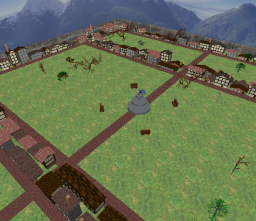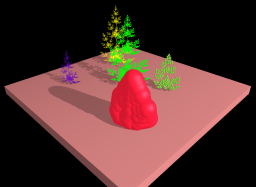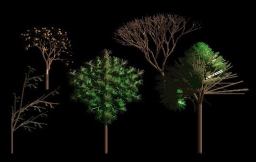Difference between revisions of "Project7Fall11Summaries"
| Line 3: | Line 3: | ||
| | | | ||
==Eternal Woodland (Anthony Medeiros, Trevor Pottinger)== | ==Eternal Woodland (Anthony Medeiros, Trevor Pottinger)== | ||
| − | + | '''Project Description''' | |
You find yourself in a forest. The plants are very interesting looking and you notice they all are uniquely different but strangely realistic. As you travel through the Eternal Woodland time slows giving the forest time to expand an infinite distance. You begin to question reality. Can this be real? Am I lost? Can you escape the Eternal Woodland? Time can’t tell. | You find yourself in a forest. The plants are very interesting looking and you notice they all are uniquely different but strangely realistic. As you travel through the Eternal Woodland time slows giving the forest time to expand an infinite distance. You begin to question reality. Can this be real? Am I lost? Can you escape the Eternal Woodland? Time can’t tell. | ||
| Line 33: | Line 33: | ||
* [, ] :- shrink, or grow the forest respectfully | * [, ] :- shrink, or grow the forest respectfully | ||
* mouse :- click and hold to move camera | * mouse :- click and hold to move camera | ||
| − | |||
|} | |} | ||
Revision as of 15:21, 6 December 2011

|
Procedural Victorian City (Cathy Hughes, Zhanzhan He)Theme and Story We created a procedurally generated Victorian-inspired city which can be explored through means of a first person character control system. Specific Rendering Effects The world has a park filled with trees and bushes generated by L-Systems surrounded by buildings generated using procedural modelling. We seed the world generation using a string supplied by the user, similar to games such as Minecraft. If the user finds a world they particularly like, it can be reproduced by supplying the same seed. The buildings are randomly sized boxes with various numbers of randomly sized windows and doors, as well as a slanted roof of varying pitch and orientation. The number of stories of the houses are also randomly generated. We created a 1st person control scheme similar to that seen in video games. The user is able to walk around and explore the world using the w-s keys to move forward and back, a-d to rotate side to side, and q-z to rotate up and down. Creative Efforts We used seamless repeating textures for our buildings (including thatched roofs, stone and timber-framed walls, and brick chimneys) and appropriate colors for our plants to convincingly convey our Victorian theme. We also made the world as non repetitive as possible. We achieved this by generating different varieties of trees and plants using different L-System rules and randomizing their placement. We also have a library of textures for walls, roofs, doors and windows of buildings from which we select randomly to improve the amount of variation. The park also features a fountain which shoots L-System generated water and is surrounded by wooden park benches. To improve the realism of the world, we render it in a bounding box or with a texture to represent the sky and use the built in OpenGL lighting. Feature Summary
|

|
A Day in the Forest (Eric Anderson, Huy Tran)The general idea would to create a moving sun that would hover over a simple forest of basic trees. As the sun moves over the environment, it would expose shadows of the trees and other objects that would be seen. Because the sun would be "orbiting" around the environment, it would also create a pseudo night/day effect. The trees of the environment would be created using a basic L-system whereas the shadow effects would be implemented using simple shadow mapping. Controls
Features
|

|
Winter Woods Maze (Shannon McPeak, Chris McFarland)Hidden deep within the snowy forest ruins lies a secret treasure... can you find it? For our final project, we made a maze that takes place in a forest setting during the winter. The story behind our project is that someone is lost in forest ruins looking for a hidden treasure. The objective of the maze will be to find the treasure chest that is hidden somewhere in the maze. The walls of the maze are composed of stone and covered in vines and the floor of the maze is covered in snow. There are large dead looking trees within the maze (since it is winter, the trees have no leaves) and there is also a fog effect. The player is able to navigate with the standard WASD/mouse controls ('a' and 'd' allow the player to strafe). This allows the player to look around in their environment. The mouse look up and down is limited to a fixed range to simulate how far you can tilt your head back. For our technical features, we procedurally generated both the maze itself and trees within the maze. The tree trunks have branches that vary in their orientation. Lastly, we implemented collision detection with the walls so that the player is not able to go through them. The player is able to slide along walls. For our artistic efforts, we focused on creating an appealing winter atmosphere. We attempted to make our maze artistically stylized rather than photorealistic. The mood of the scene is meant to be mysterious. Technical Features Summary
|
